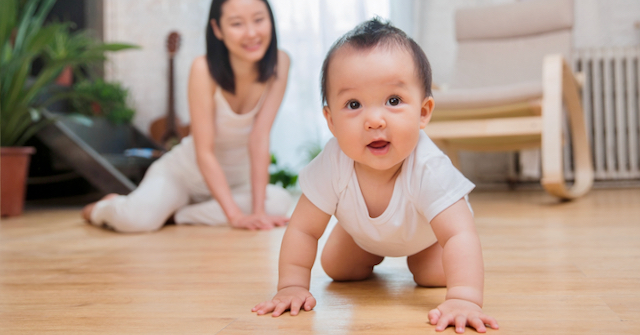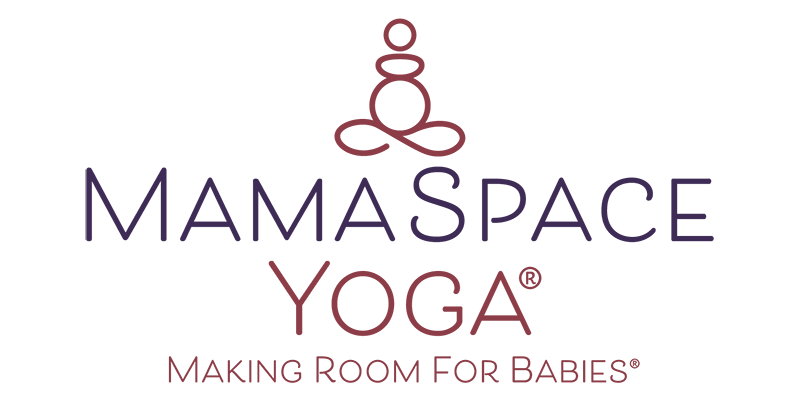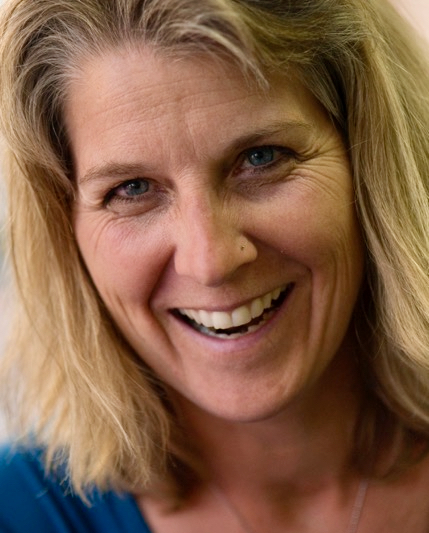 By Guest Blogger, Ellynne Skove, LCAT, BC-DMT, NCC, E-RYT
By Guest Blogger, Ellynne Skove, LCAT, BC-DMT, NCC, E-RYT
Baby Spines
Babies are born with their spines in a “c” curve. They have been furled into fetal position, not unlike a fiddlehead fern in the spring. The fiddlehead unfurls with time and growth, turning into a lovely full, upright, and open fern leaf. The human baby, with time, and an innate blueprint of movement patterns that involve pushing, pulling, and reaching, will develop the necessary cervical, thoracic, and lumbar curves of the spine. This is the internal architecture that allows humans to be the only bipedal vertical mammal on this planet.
The centerline and midline of the body develop as the infant’s spine develops. The vestibular and proprioceptive senses (involving balance and a sense of where the body is in space) develop at the same time. The baby’s nervous system, immature at birth, operates ten times slower than the adult nervous system. The infant learns to regulate the nervous system as the brain grows to 85% of its full capacity in the first year after birth.
Babies Work Hard
Earliest experiences hardwire a baby’s developing brain.
Babies are very busy as they develop into vertical human beings! They work hard as they learn to lift their heads. Baby heads are a great deal heavier than their bottoms! They follow their senses of sight, sound, smell, taste, and touch as they explore their new world outside the womb. They learn to move as they follow their senses. Movement enables them to touch, feel, taste, smell, see, hear, and grasp the things they notice.
Babies are great communicators. They have distinct cries to let us know their needs: hunger, burping, gas, sleep, and the need to be moved and settled. Through their cries they communicate with the adults who care for them. They are sentient beings who have been learning in the womb from their parents. They have preferences and imprints already formed before they are born.
Babies Practice Yoga
Babies develop their movement patterns in a natural sequence. When the natural developmental sequence is encouraged and supported, babies find their way to an aligned, seated “mountain” pose. They use their sit bones like their “first feet” to push into the ground, defying gravity while elongating the spine and raising the torso upwards. This an equal and opposite force or “yoga,” union of actions. When we see babies sitting this way, they look fully present and focused. They’re open and calm like little Buddhas! This is what adults who practice meditation and yoga are trying to attain. The movement patterns babies employ as they arrive independently in aligned vertical sitting or standing, are all foundational yoga poses. Perhaps the original yogis practiced by observing babies.
Developmental Movement Patterns
Movement has the power to relax, stimulate, re-orient, perceive, memorize, and integrate the entire being.
Below is the general order of baby developmental movement patterns. These patterns develop the spinal curves and muscle strength. They help establish the foot bones and they feed the curiosity of the senses. These movement patterns, familiar to all adult yogis, encompass back bends, forward bends, side stretches, chest openers, twists, balance, alignment, breathing, integration, and rest.
- Belly Breathing…starfish pose…pranayama
- Head Lift (prone – on the belly)…baby cobra/sphinx…chest opener (cervical and thoracic spine)
- Tail Lift (prone – on the belly)…knees, chest, and chin, (lumbar and thoracic back bend)
- Simultaneous Head and Tail Lift (prone – on the belly)… locust or airplane (engages the entire spine)
- Tail Lift (on the back)… beginning plow and happy baby (forward bend)
- Side Lying….modified side plank (strengthens core muscles)
- Lifting Arms….side stretch
- Opening Arms….chest opener
- Rolling….twist
- Pushing Backwards (prone – on the belly)…Using the feet for mobility and grounding aligns the feet, ankles, legs, hips, and all of the corresponding joints. This is the foundation of aligned posture.
- Creeping on the belly/aka: “commando crawl”…Push, Pull, Reach Integration (feet, hands, and eyes work together for propulsion)
- Pushing Onto Hands and Feet….plank, dolphin, or down dog (balance and foot strengthening)
- Rising to Arms/Hands and Knees…table top…child’s pose (balancing on 4 points builds midline and centerline awareness)
- Squatting…squatting
- Sitting…easy pose/ seated mountain (aligning with heaven & earth)
- Kneeling…virasana/hero pose
- Standing…mountain pose (foot balance, spine integrity, joining the rest of the humans)
- Standing on One Foot….tree pose (balance)
The Movement Blueprint
All of these actions are part of an inherent movement “blueprint”. Babies need floor time, playful encouragement and support to move through these patterns. It is beneficial for the adult caregivers and older siblings to get on the floor with babies and engage in these actions too. This creates healthy spines for all!
How We Can Help Babies
Babies are adjusting to enormous changes from the self-contained womb world where their needs were met automatically to their new world post birth. They are learning to breathe, suckle, digest, eliminate, deal with gravity while settling and regulating their nervous systems. Below is a yoga practice we can offer to babies to help their nervous systems soothe, settle, and experience joy. This helps release more oxytocin, the growth and love hormone!
Pace
Slow yourself down. Mirror your baby’s nervous system. Attune and focus on the present moment.
Align
Find your own center and ground so that when your baby is in distress you can be the calm “eye of the storm” and respond instead of react.
Pranayama
Breathe deeply. Hold your baby so they can entrain and mirror your breathing. This helps your baby to settle if distressed.
Chant
Hum a low “mmm” sound or chant “OM” while holding your baby chest to chest (heart to heart). You can also place a hand on your baby’s heart to help settle.
Exercise/Play
This helps babies move energy and gain nervous system regulation. Massage, gently bounce, sing or stretch your baby into some gentle yoga poses. It is important to consider what the baby might have imprinted in the womb world when exercising in the post birth world. If the mother walked, ran, danced, or did a lot of yoga, then the baby will have imprinted that level of physicality in the womb and will find movement that embodies similar elements more settling and familiar.
Reflect/Mirror
Just as a yoga teacher checks in with the students about their needs and challenges, your baby appreciates it when you reflect to them what you observe. This is a form of witnessing and observing that is deeply gratifying for your baby. For example, if a baby is having teething pain and is uncomfortable, having a caregiver reflect this back instead of trying to distract the baby is more authentic. This develops trust and attachment between a baby and caregiver. Of course, offering something for the discomfort is also a good idea!
Listen
Learn the five baby cries so that you can easily discern your baby’s needs. Dunstan Baby Language is a wonderful resource for this and is available on a DVD, a phone app called Baby Ears, and in a YouTube video at https://www.youtube.com/watch?v=V2n2SLvjQas
ReSource Yourself
Caring for a new baby is full of wonders and challenges. Sleep deprivation and feelings of overwhelm are common. Becoming a parent is a stepping through one of life’s biggest portals! We are so used to “DOING” and not as practiced at “BEING”. Yet, we are called “HUMAN BEINGS”. Make time to BE with your baby and partner/spouse in a way that nourishes all of you. Find ways to feel good as you look for wondrous moments in every day. These are small meditations or stillness moments of awe and joy. Notice how your baby enjoys watching the falling leaves in the autumn air, or seeing snowflakes for the first time. Introduce your baby to the smell of a flower, or the colors of a sunset (sunrise if you are up early with your little one). Take deep breaths in these moments of awed sharing. Let them fill you with the joy of the senses in the present moment.
Babies offer us so much in regards to asana practice. We can offer babies the practices of yoga that relate to being in the world off the yoga mat; pranayama, chanting, aligning, and responsiveness.
Namaste!
About Ellynne Skove
Ellynne Skove, LCAT, BC-DMT, NCC, E-RYT is the creator of GoGo Babies® Developmental Movement and Baby Yoga classes. She runs professional trainings in the USA and abroad regarding prenatal bonding, imprints, birth trauma healing, baby massage, and understanding newborns. Ellynne has worked for over 40 years with special needs children, new parents. She employs pre and perinatal psychology in all of her work. Ellynne is a mentor for pre & perinatal educator students in the Association for Pre & Perinatal Psychology and Health (APPPAH). She is a licensed dance/movement therapist, yoga teacher, Polarity therapist, and nationally certified counselor. Read More About Ellynne Here


